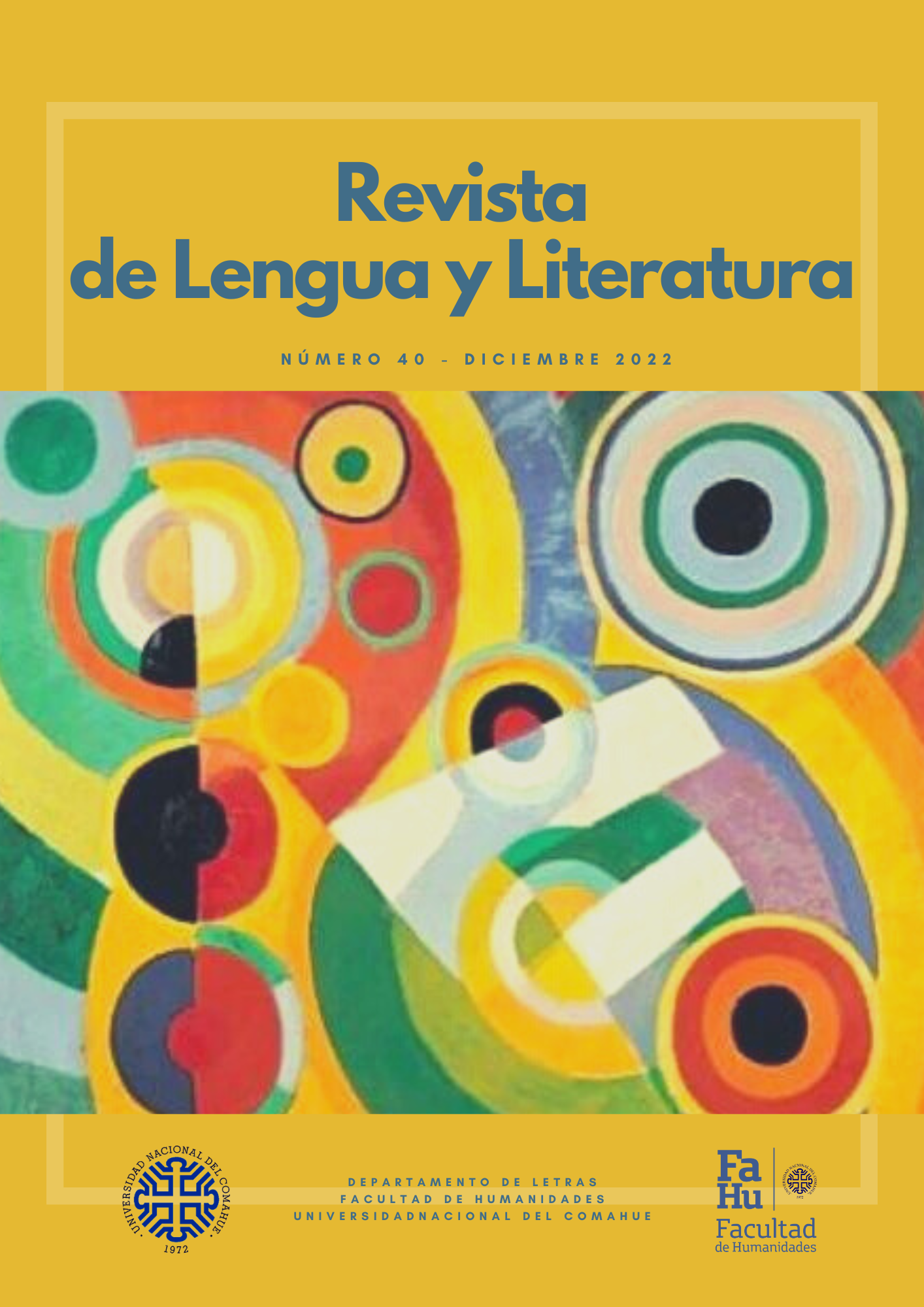Memoria y migración en Behold the Dreamers
Palabras clave:
Memoria cultural, Olvido, Migración, Imbolo Mbue, AsimilaciónResumen
Este trabajo presenta un primer acercamiento a Behold the Dreamers, escrita por la camerunés Imbolo Mbue y publicada en 2016. La novela gira en torno a una joven pareja que emigra a Estados Unidos motivada por un único sueño: el deseo de una mejor vida. Abordaremos el texto, en términos generales, desde la perspectiva de los estudios de la memoria para examinar las representaciones de la memoria cultural en un contexto migratorio. La asociación entre migración y memoria a menudo se basa en la añoranza del lugar de origen y el sentimiento de pertenencia, así como en la búsqueda de preservar la cultura propia. La novela de Mbue, sin embargo, examina otros modos de construir la memoria y su par complementario, el olvido. El deseo de no recordar ciertas tradiciones, costumbres y vivencias es una forma de construir memoria y se asocia, en la novela, con la asimilación cultural. Se focalizará, asimismo, en cómo la construcción de la feminidad está estrechamente relacionada con las memorias culturales de una sociedad y con la memoria transcultural de las comunidades migrantes. Para los fines de este análisis serán importantes los conceptos de memoria cultural de Jan Assmann (2011) y memoria transcultural de Astrid Erll (2011), entre otros.
Descargas
Citas
Assmann, J. (2011). Cultural Memory and Early Civilizations. Writing, Remembrance and Political Imagination. Alemannia: Cambridge University Press.
Costa Picazo, R. (2001). De la Globalización, el multiculturalismo y otros enfoques actuales. En C. Elgue-Martini y M. A. Carballo (eds.), América desde la contemporaneidad: Norte(s) y Sur(es) (pp. 13-26), Córdoba: Comunicarte.
Crag, P. (2010). Diasporas and Material Culture. En K. Nutt y S. McLoughlin (eds.), Diasporas. Concepts, Intersections, Identities (pp. 139-144), Londres: Zed Books.
Cuello, M. B. (2018). Insights into the American Dream: A Study of Esmeralda Santiago´s Almost a Woman, Helena María Viramontes´ Under the Feet of Jesus and Cristina Garcia´ Dreaming in Cuban. Facultad de Lenguas, Universidad Nacional de Córdoba.
de Crevecoeur, H. St. J. (1782). What is an American? Digital History. www.digitalhistory.uh.edu/disp_textbook.cfm?smtid=3&psid=3644
Erll, A. (2011). Travelling Memory. Parallax 17 (4), 4-18. Recuperado de: https://www.tandfonline.com/doi/full/10.1080/13534645.2011.605570?scroll=top&needAccess=true
Erll, A. y Nunning, A. (2011). Cultural memory Studies. An international and Interdisciplinary Handbook. Berlín: Walter de Gruyer.
Hirsch, Marianne. (2002). Feminism and Cultural Memory. An Introduction. Signs: Journal of Women in Culture and Society 28 (1), 1-19.
Mbue, I. (2016). Behold the Dreamers. Londres: Fourth State.
Quijano, Aníbal. (1992). “Colonialidad y modernidad/racionalidad”. Perú Indígena 13 (29), 11-20.
Truslow Adams, J. (1941). The Epic of America. Nueva York: Blue Ribbon Books.
Descargas
Publicado
Cómo citar
Número
Sección
Licencia
Derechos de autor 2022 Revista de Lengua y LiteraturaLa aceptación de colaboraciones por parte de la revista implica la cesión no exclusiva de los derechos patrimoniales de los autores a favor del editor, quien permite la reutilización bajo Licencia Atribución-NoComercial-SinDerivadas 2.5 Argentina (CC BY-NC-ND 2.5 AR)
Usted es libre de:
Compartir — copiar y redistribuir el material en cualquier medio o formato
La licenciante no puede revocar estas libertades en tanto usted siga los términos de la licencia
Bajo los siguientes términos:
Atribución — Usted debe dar crédito de manera adecuada, brindar un enlace a la licencia, e indicar si se han realizado cambios. Puede hacerlo en cualquier forma razonable, pero no de forma tal que sugiera que usted o su uso tienen el apoyo de la licenciante.
NoComercial — Usted no puede hacer uso del material con propósitos comerciales.
SinDerivadas — Si remezcla, transforma o crea a partir
El simple hecho de cambiar el formato nunca genera una obra derivada, no podrá distribuir el material modificado.
No hay restricciones adicionales — No puede aplicar términos legales ni medidas tecnológicas que restrinjan legalmente a otras a hacer cualquier uso permitido por la licencia.





